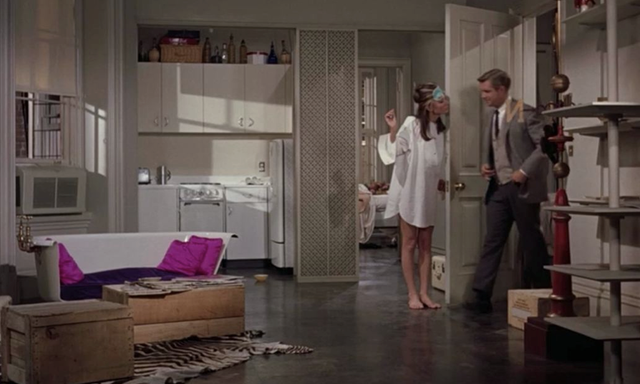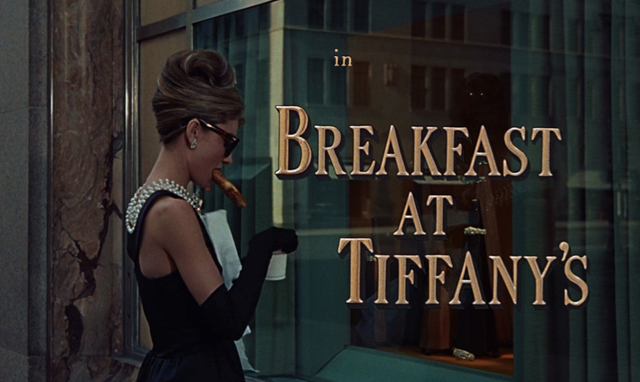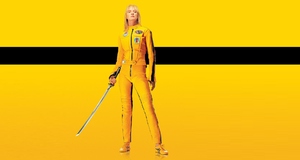Holly Golightly and the Endless Pursuit of Self-Actualization in "Breakfast at Tiffany's"Commodified and Performed Female IdentityFor a time, Holly forges a sustainable identity for herself amidst burgeoning urban consumer culture. As Wasson writes, she “showed that glamour was available to anyone, no matter their age, sex life, or social standing” (xviii). She has the freedom to navigate a myriad of social situations – from Sing Sing to the powder room – and she is able to disinhabit and actively invert the domestic sphere to which she once belonged. She no longer suffers what Friedan describes as the “strange stirring, a sense of dissatisfaction, a yearning” among married women in the mid-twentieth century: Each suburban wife struggled with it alone. As she made the beds, shopped for groceries, matched slipcover material, ate peanut butter sandwiches with her children, chauffeured Cub Scouts and Brownies, lay beside her husband at night – she was afraid to ask even of herself the silent question – “Is this all?” (15). Her apartment – with its bathtub-cum-sofa, empty suitcases and its disarrayed ornaments – symbolizes the subversion of such a code of existence (Fig. 2). It is hardly a place of nourishment or matching fabrics, but instead a pit stop where she “dresses herself, genders herself” and assembles her identity (Cohen 316). It is the urban world outside her apartment that she must navigate and domesticate in order to survive.In this specific historical and urban context, Holly must commodify herself in order to crystallize an identity that demystifies the social codes described by Friedan. Elaine Tyler May describes the normative solution to the woman’s question of “Is this all?” in urban consumer culture: “commodities would solve the problem of the discontented housewife” (172). While the frenzied consumption of commodities might distract the captive of the feminine mystique from a sense of subjugation by this logic, Holly’s subversive identity ironically necessitates self-commodification. She must see twenty-six different men in the powder room in two months in order to feed herself and pay her apartment rent. The commodified Holly seeks to be valued, believing that “who a man thinks you are” can be gauged by the earrings he gives you. By acquiring Tiffany’s jewelry, an individual moves one step closer to becoming valuable – to being placed in a glass case, proudly on display for society. In such a way, a viable commodity must be effectively presented for its given social environment. Erving Goffman writes in The Presentation of Self in Everyday Life (1959): As human beings, we are presumably creatures of variable impulse with moods and energies that change from one moment to the next. As characters put on for an audience, however, we must not be subject to ups and downs … a certain bureaucratization of the spirit is expected so that we can be relied upon to give a perfectly homogenous performance at every appointed time (56). Identity needs to be neatly packaged for public consumption. Although it may be empowering in its transformability and even a site of agency, it is a performance – a well-practiced, sometimes dehumanizing façade. Whether or not she enjoys the role, Holly must perform the “American geisha” in order to achieve a semblance of autonomy in her male-dominated diegesis. Holly Golightly’s Urban MetamorphosesAfter having discussed the film’s historical context and proposed a theoretical framework, this essay will now analyze three sequences in Tiffany’s: the opening credits, the extended apartment party sequence, and the final scene in which Holly and Paul kiss in the rain. In each of these scenes, Holly’s identity is in flux, transforming as she moves between these disparate social situations and emotional trials. When the first shot of the film fades in on a relatively deserted Fifth Avenue, it is 5:45am and Holly has the “Mean Reds” – the feeling when “suddenly you’re afraid and you don’t know what you’re afraid of.” In this moment of fear, Holly has retreated to her version of the domestic space: the sidewalk in front of Tiffany & Co. Here, in front of a reflective window, the bejeweled Holly prepares breakfast for herself with gloved hands, procuring food not from a kitchen but a paper bag (Fig. 3). As she gazes at her reflection positioned among the jewelry of Tiffany’s, the swelling notes of Henry Mancini’s “Moon River” leitmotiv evoke a simple life in the countryside. Overtly nostalgic, the song signifies the passing of one identity to another: Lulamae Barnes is permanently of the past. Wojcik argues that the recurring song evokes Holly’s migration to New York City: “[she] seems to habitually repress her home and reenact its leaving” (142). Here is the modern frontier – where the rivers are streets that take Holly to wealthier men and more expensive jewelry, where the pig is Rusty Trawler (Stanley Adams), and where the rats are the men she has seen in the powder room. In this inversion of the natural world, serenity cannot be achieved by running through the briar patch, but by hurrying to take a peek at the golden chandeliers behind the glass of the Tiffany & Co. window. She has left her former identity in Texas, and thus begins to self-actualize her new identity amid this lonely concrete world – in the reflective window. She tilts her head at her reflection as if pondering what it would be like to attain the independence and social strata necessary to truly belong inside a place like Tiffany’s. Holly sees her reflected image – with the inexpensive pearls around her neck – among the exorbitant jewelry and chandeliers, and in that moment decides to mimic that identity. She has window-shopped for a new self – for an identity that allows for upward social and class mobility. Over the course of the opening credits, her body language has loosened up, and she walks more quickly and assuredly. Acting as her own breadwinner, she has fed herself and is now prepared to perform her new identity. As the opening scene dissolves into the next, she playfully arranges her white scarf in her version of the dressing room – confident and assembled. Although this essay has previously described Holly’s apartment as a “pit stop,” the space also represents an intersection between private and public spheres, evinced most obviously by the extended party sequence. Despite the congested chaos of the party, Holly has domesticated this space: she orchestrates the most viable social interactions, maneuvering among Rusty Trawler, Paul, O. J. Berman, and a man with an unnecessary eye patch. When Paul asks, “Who are all these people, anyhow?” Holly responds, “Who knows?” – her party is not merely a social event but a semi-public scene of commerce. As Guy Debord writes in The Society of the Spectacle (1967): “the world at once present and absent which the spectacle makes visible is the world of the commodity dominating all that is lived” (37). With reality and mass media intertwined, commodification pervades all social interactions. Upon first glance, Rusty Trawler and José da Silva Pereira (José Luis de Vilallonga) are “goodies,” and the former quickly appreciates in value to the “ninth richest man in America under fifty.” In order for Holly to continue paying rent, she must sustain this scene of commerce and invest her time during the party accordingly. She quickly dismisses the man who comes up to her asking for forty-seven dollars by shoving a wine glass in his hand. When the cops break up the party, she makes a quick exit, hand in hand with the most promising consumer: Rusty. In a sense, Holly’s existence among scenes of commerce can be narrativized by an account book. In this subsequent scene, when Sally Tomato (Alan Reed) looks over Holly’s records, he says to Paul: “Someday … you take this book and turn it into a novel. Everything is there. This is a book that would break the heart.”4 Holly must visit “Mr. Fitzsimmons” in the powder room in order to repair the black satin dress a previous man likely damaged. The woman at the party who scrutinizes her mirror image may be laughing and sobbing due to the realization that, in everyday life in urban consumer culture, the female self is presented as a commodity under constant social surveillance. As her mascara bleeds, she regards her depreciation in value with horror. At this point in the film, Holly has mastered “playing the scene,” as she calls it, and her identity is both self-actualized and self-commodified.Continued on Next Page » Suggested Reading from Inquiries Journal
Inquiries Journal provides undergraduate and graduate students around the world a platform for the wide dissemination of academic work over a range of core disciplines. Representing the work of students from hundreds of institutions around the globe, Inquiries Journal's large database of academic articles is completely free. Learn more | Blog | Submit Latest in Film & Media |




















